In the world of supplements, there is perhaps no substance more controversial than caffeine.
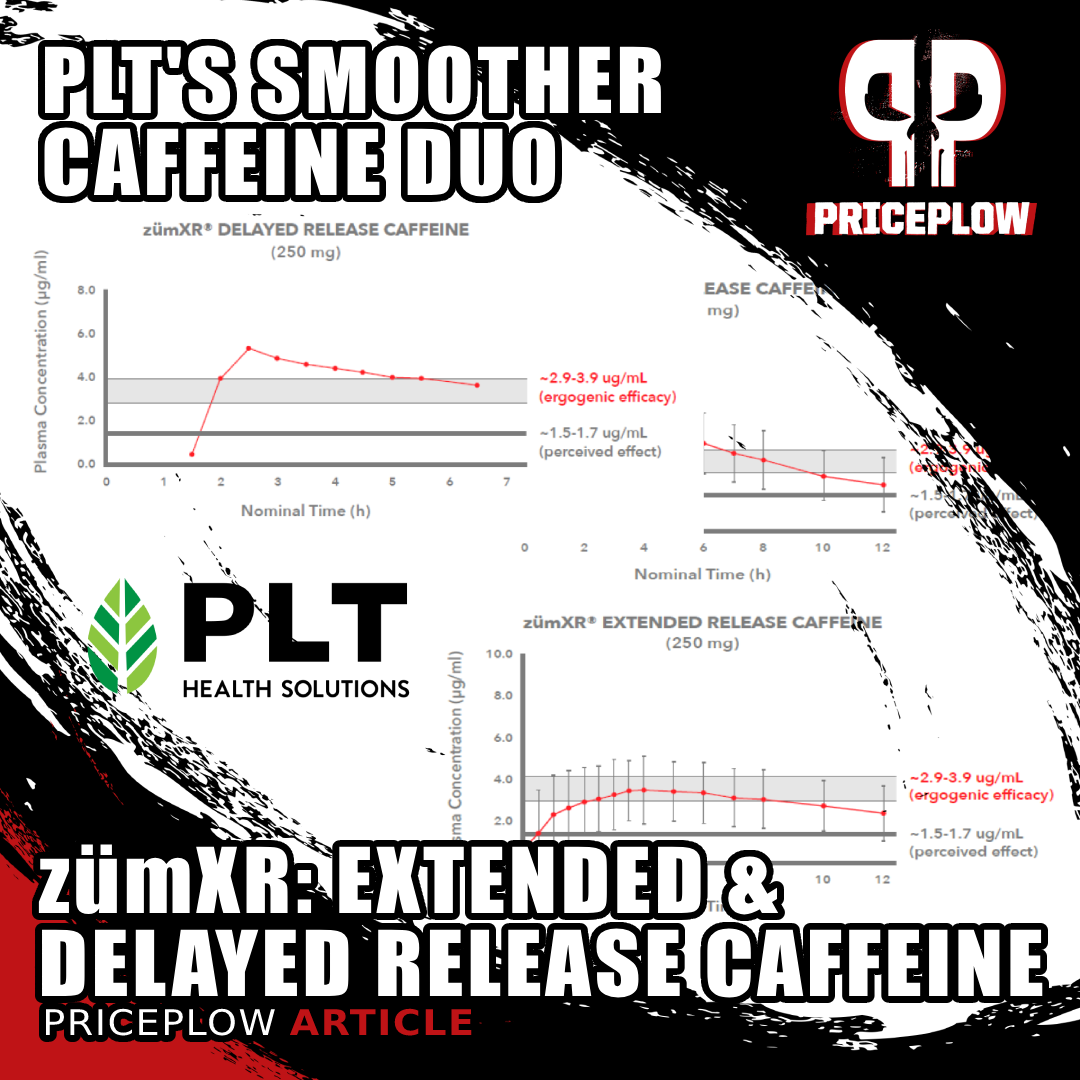
zümXR is pushing the boundaries of caffeine innovation. This advanced system allows for precise customization of the energy curve using their Extended Release (XR) and Delayed Release (DR) forms of caffeine.
Simply type "caffeine" into Google or YouTube and you'll get dozens of videos and articles on each side of the caffeine debate, including a legion of impressively credentialed experts arguing vociferously in favor of caffeine's use as a performance-enhancing and health-promoting supplement, citing caffeine's ergogenic, thermogenic, and nootropic properties. There are also a few arguing against it, insisting that regular caffeine use leads to sleep disturbances, the caffeine "jitters", and elevated blood pressure.
As is often the case, the truth lies somewhere between these two extremes. Both sides are right, but not because caffeine has all the aforementioned effects simultaneously, but rather, because caffeine may have different effects depending on who takes it and when. Individual differences in genetics and lifestyle can create huge discrepancies between two people's caffeine experiences.
Some of us want it to metabolize faster, but others want it to last longer. If you're in the latter group, then today's article is for you:
PLT Health’s Caffeine 2.0 Entry – zümXR Targeted-Release Caffeine
Supplement R&D teams are currently in a race to create caffeine 2.0. It seems like everybody's looking for a new substance or delivery system that can deliver the same benefits of caffeine but without the drawbacks.
Generally speaking, these attempts, which we've seen a lot of in recent years, fall into one of two categories:
- A molecule that's chemically similar to caffeine, or
- A novel delivery system that alters caffeine's pharmacokinetics or pharmacodynamics.
Today we're talking about a product that falls into the second category: zümXR from PLT Health Solutions.
So, what's the caffeine-related problem that zümXR seeks to solve? The "caffeine crash".
To do so, zümXR comes in two formats:
- zümXR Extended Release
- zümXR Delayed Release
This article will cover both. First, sign up for our PLT Health and zümXR alerts on PricePlow, and let's get into the differences:
Subscribe to PricePlow's Newsletter and Alerts on These Topics
The background: Multi-Phase Energy Solutions on the Rise
According to market research carried out by Actionable Research, Inc. on behalf of PLT, a whopping 90% of consumers prefer multi-phase energy solutions, which refers to a pharmacokinetic profile of the supplement that changes depending on how much time has elapsed since ingestion.
The same market research indicates that more than half of consumers would change their pre-workout brand in order to use a product with a multi-phased energy system like zümXR.
The zümXR system consists of a caffeine molecule wrapped in one of two delivery systems, each with a distinct pharmacokinetic profile suited for different applications:
-
zümXR Extended Release (ER)
The zümXR Extended Release (ER) product consists of a caffeine molecule and an ethylcellulose dispersion delivery system that immediately and uniformly releases ingested caffeine into the gastrointestinal tract where it's gradually absorbed into the bloodstream.
This ultimately yields a form of caffeine that's 65% longer-lasting than ordinary caffeine -- see the energy curves below, as provided by PLT Health:
The pharmacokinetic curve of "immediate release" (i.e., generic anhydrous) caffeine vs. zümXR extended release caffeine.[1] Note that the zümXR pharmacokinetic curve spends significantly more time in the serum concentration range for optimal ergogenic efficiency than IR does. The ergogenic efficiency range was defined by a 2016 research review on caffeine, authored by McLellan et al.[2]
As you can see from the inset image, this extended release form of caffeine produces a very different pharmacokinetic curve than generic anhydrous stuff. Obviously, serum caffeine levels peak lower, and remain sustained for a longer period of time, when using an extended release delivery system. PLT calls this targeted-release caffeine because it's designed to keep caffeine blood levels within a target range throughout the duration of caffeine administration.
Changes the dissolution of caffeine, not the metabolism
An important thing to note is that zümXR impacts the dissolution of caffeine, not the metabolism. This is changing the availability of caffeine for absorption -- basically, an extended "unlocking" of the ingredient for use.
zümXR is pushing the boundaries of caffeine innovation. This advanced system allows for precise customization of the energy curve with its mix of IR, ER, and DR caffeine.
zümXR-ER (Extended Release) is manufactured to conform with the following specifications:
- Not less than 71.7% caffeine by weight
- Not more than 55% of caffeine released 1 hour after ingestion
- Not less than 80% of caffeine released 6 hours after ingestion
This simple alteration to caffeine's pharmacokinetic curve comes with a few profoundly important practical benefits:
-
More sustained, longer-lasting
Increasing mental and physical energy is why any of us bother with caffeine in the first place, and the extent to which caffeine energizes us is basically a function of its concentration in the blood at any given time.
While we need energy to complete tasks, wild fluctuations in energy levels can be very disruptive to the completion of those tasks. We don't want to be in the middle of studying for an exam, or powering through a tough workout, when suddenly our caffeine-induced energy begins to wane.
Sustained energy is the goal, and delayed-release caffeine — by maintaining a steady caffeine blood level throughout the digestion and absorption of ingested caffeine — can provide us with the sustained energy we're looking for.
-
Reduced jitters and withdrawals
As a corollary to the desirability of sustained energy, we also want to avoid symptoms that can be caused by getting too far outside our target caffeine range.
If there's too much caffeine in our blood, then it's liable to cause jitters, anxiety, and can disrupt focus, which is a huge problem for anyone who's relying on caffeine to get them through a cognitive task.
Beyond that, once serum caffeine begins to drop from its peak concentration, a "crash" occurs due to the rapid decline of caffeine in the blood.
Long enough after that, and its withdrawal symptoms can set in. For some people, these withdrawal symptoms can be just as disruptive as having too much caffeine, or not having enough energy in the first place (the problem that caffeine is supposed to help with).
zümXR can help with all of these problems, by reducing the jitters, reducing the crash, and reducing the need for increasingly large doses (which subsequently lead to worse withdrawals).
-
Longer duration/reduced dosing
With serum caffeine levels tightly controlled, you don't need to worry about "staying caffeinated" by gradually sipping on tea, coffee, or energy drinks to stave off the dreaded caffeine withdrawal symptoms. This reduced need to re-dose caffeine after the initial administration frees you up to work on what's important to you, without pause or interruption, which is hugely important for task efficiency and deep focus.
Here's the bottom line: since more than 90% of American adults consume caffeinated beverages on a daily basis, it's safe to say that we've all, at one point or another, found ourselves stuck in what we call the "caffeine dance" – constantly consuming just enough additional caffeine to keep our caffeine blood levels topped off and avoid withdrawals.
The “more more more” solution is not the solution
The typical way to enhance and experience the effects of caffeine is for individuals to use increasingly greater amounts of it, which merely increases the prevalence and severity of the above issues!
zümXR extended release is designed to end the caffeine dance once and for all. And pre-workout supplements containing the ingredient (many that we've covered in the past are listed at the bottom of this post) receive extremely favorable reviews because of this.
-
zümXR Delayed Release (DR)
Delayed release (DR) zümXR pharmacokinetic curve.[1] Compare to that of ER in the graph above. Definition of ergogenic efficiency range derived from McLellan et al. (2016).[2]
Now here comes the more interesting, yet less frequently used version.
In addition to the extended release version, which probably has the broadest range of standalone applications, PLT health has developed a highly-unique delayed release (DR) form of zümXR. The DR product uses a bioadhesive polymer delivery system to rapidly release caffeine into the gastrointestinal tract after a specified time delay.
What to stack with zümXR? Zynamite is PLT Health's Next-Gen Brain and Body Support Ingredient, harnessing the power of ≥60% mangiferin from mango leaf extract
In simple terms, zümXR-DR has a pharmacokinetic curve similar to that of immediate release caffeine, only that absorption of approximately 80% of the dose is delayed by 90 minutes!
Again, zümXR is impacting caffeine's dissolution here, not the metabolism. Basically, the delivery system forces a set amount of waiting time before it's "unlocked", and then it becomes available for use/absorption.
This means that you will take it, and feel the pop of caffeine much later than you normally do. Combine this with regular caffeine, however, and it becomes a second wave of energy, and is an incredible feeling, especially for those who enjoy very long study or workout sessions.
There are some really interesting applications for zümXR-DR, particularly as an adjunct to other forms of caffeine. More specifically, the DR form offers another strategy for offsetting caffeine withdrawal – besides managing the release of ingested caffeine, you can use DR to also release more caffeine just as serum caffeine levels are tapering off.
Combining DR caffeine with ER and/or IR can help stave off the dreaded crash that accompanies caffeine withdrawals by releasing additional caffeine when the initial surge begins to taper.
Using delayed release in this fashion is a compelling complementary strategy to managing caffeine release through extended release technologies.
Doesn’t change your biology, but works with it
It's worth repeating that zümXR caffeine in both delayed and extended-release grades were specifically designed to alleviate the side effects discussed above, while not changing the metabolism. After all, faster metabolism can just lead to quicker jitters and crashes, and reduce the effectiveness throughout a workout.
Instead, zümXR impacts the dissolution of caffeine, or its availability for absorption.
The zümXR System Offers Formulator Flexibility
By combining zümXR-ER, zümXR-DR, and good old immediate release caffeine in varying proportions, supplement formulators have the option to create an infinite variety of custom-tapered caffeine experiences for the end user.
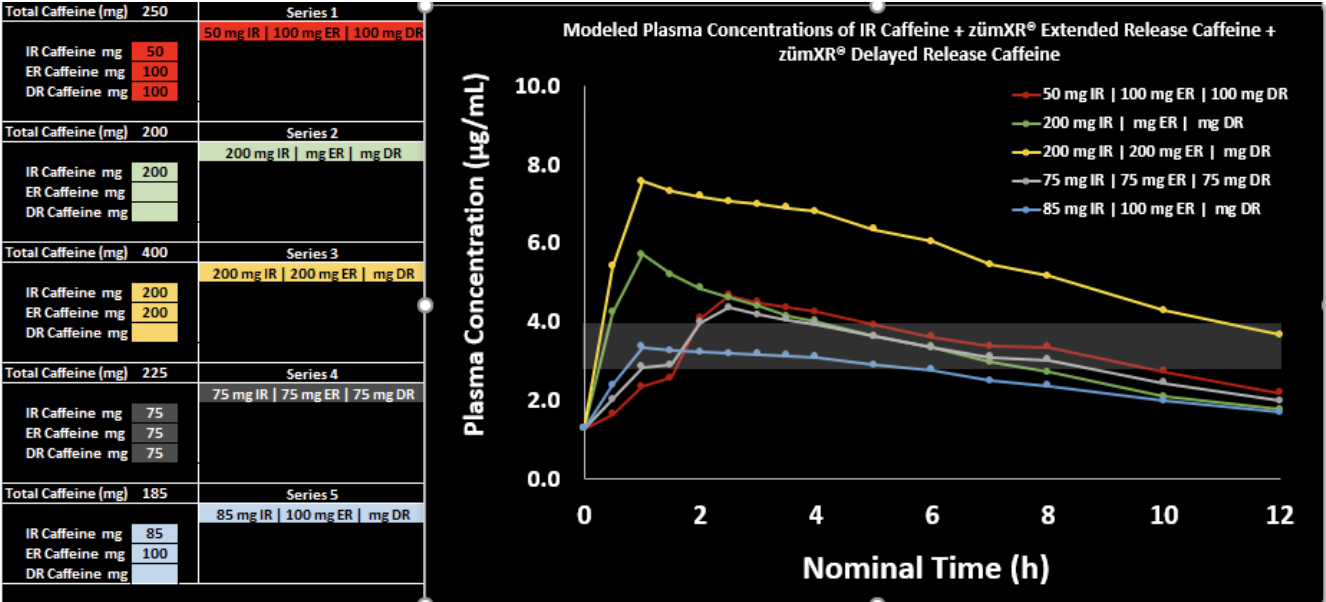
PLT-supplied pharmacokinetic performance models for some hypothetical blends of IR, ER, and DR caffeine. Note the varying proportions of each ingredient listed in the left-hand side column.
Make life easier on the consumer: titrate for them!
Many people "titrate" caffeine into their bodies by sipping it throughout the day. This is literally what zümXR does, but in two convenient dose forms that are titrated by a highly-controlled delivery over a desired period of time that can be targeted by the formulator.
This does the hard work for them, and most consumers generally like it when you take a burden off of their minds.
Better COAs: The caffeine competition
It's no secret that the market offers various forms of caffeine and caffeine alternatives. PLT Health is proud to emphasize that very few competitors provide a clinically validated, sustained-release or targeted-release caffeine that guarantees the pharmacokinetic curve and dissolution profile of every batch.
However, PLT Health ensures this level of quality by including the tested results from a validated testing method on their Certificate of Analysis (COA) for each lot. This is a significant selling point for brands and manufacturers, as it assures consistency and reliability.
The Science
This isn't all just marketing either – zümXR already has solid clinical data to back it up.
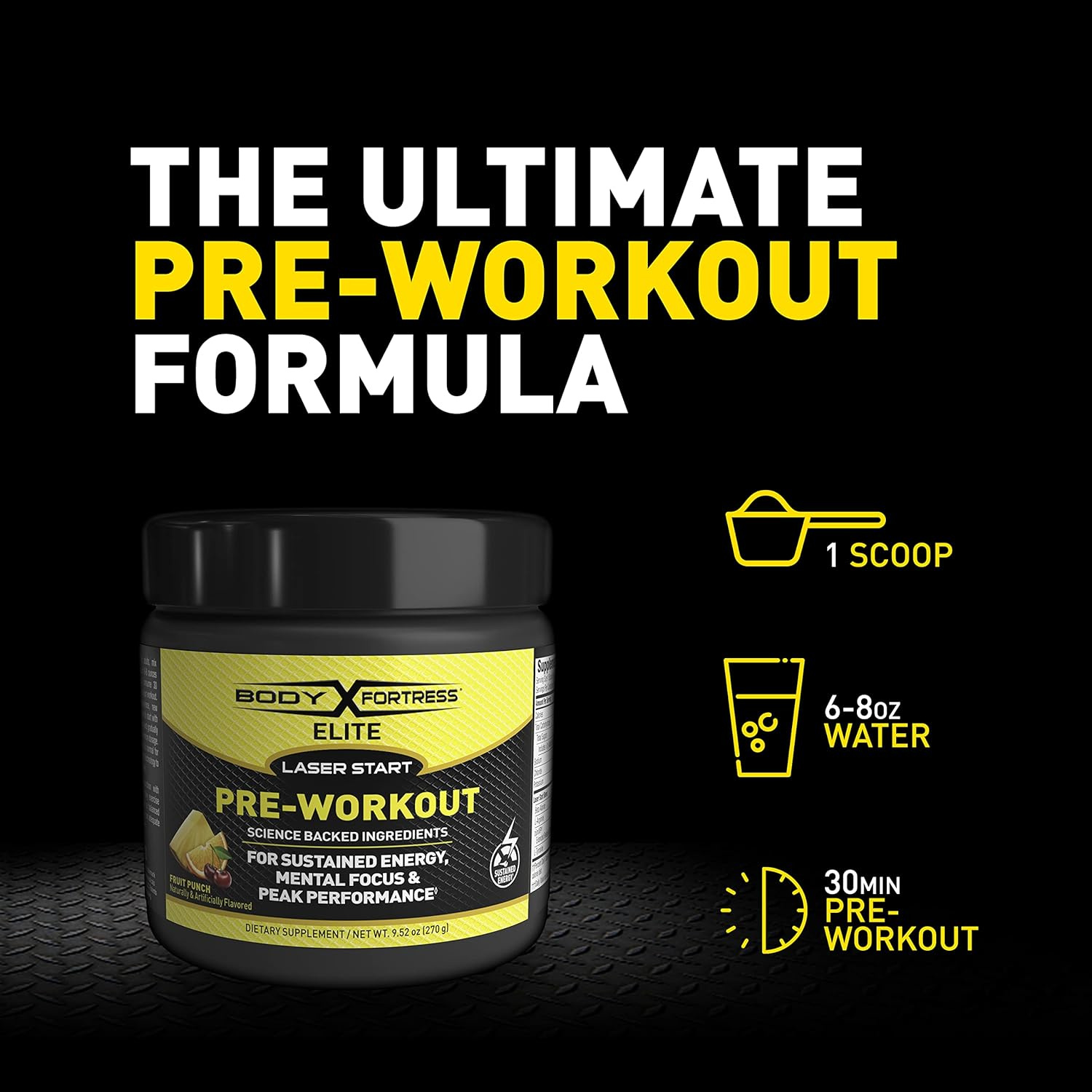
Want to try a pre-workout that's exclusively made with zümXR? Then check out the 250 milligrams in Body Fortress Elite Laser Start Pre-Workout!
During the of proceedings the 15th International Society of Sports Nutrition (ISSN) Conference and Expo in 2018, Kalman et al. presented the results of their randomized, two-way, counterbalanced crossover trial in which 12 healthy adults (7 males and 5 females with an average age of 36) were administered either 250 mg immediate release (IR) caffeine or 250 mg zümXR extended release (ER) caffeine.
Note, this is not the randomized, double-blind, placebo-controlled study design that we typically discuss and expect from manufacturers – which is totally fine for this application. Since pharmacokinetic studies are primarily concerned with understanding how drugs behave in the body rather than their therapeutic effects, the emphasis is on study designs that allow for accurate measurement and comparison of pharmacokinetic parameters.
It was, however, a crossover study, which means that the subjects served as their own controls. First, they took one substance, and then, after a three-day washout period, they took the other. Again, crossover studies are great for pharmacokinetic modeling because when participants serve as their own controls, it eliminates individual response variability as a potential source of empirical bias. So, again, for pharmacokinetic modeling, a crossover study can actually be considered better than the typical RCT.
This study demonstrated that while the IR caffeine delivered 100% of the administered caffeine within 1 hour after administration, the zümXR-ER had delivered just 26% at the 1-hour mark, yet 79% at the 6-hour mark.[1] Better not take this one too late in the day - it's going to keep on coming long after it's been taken!
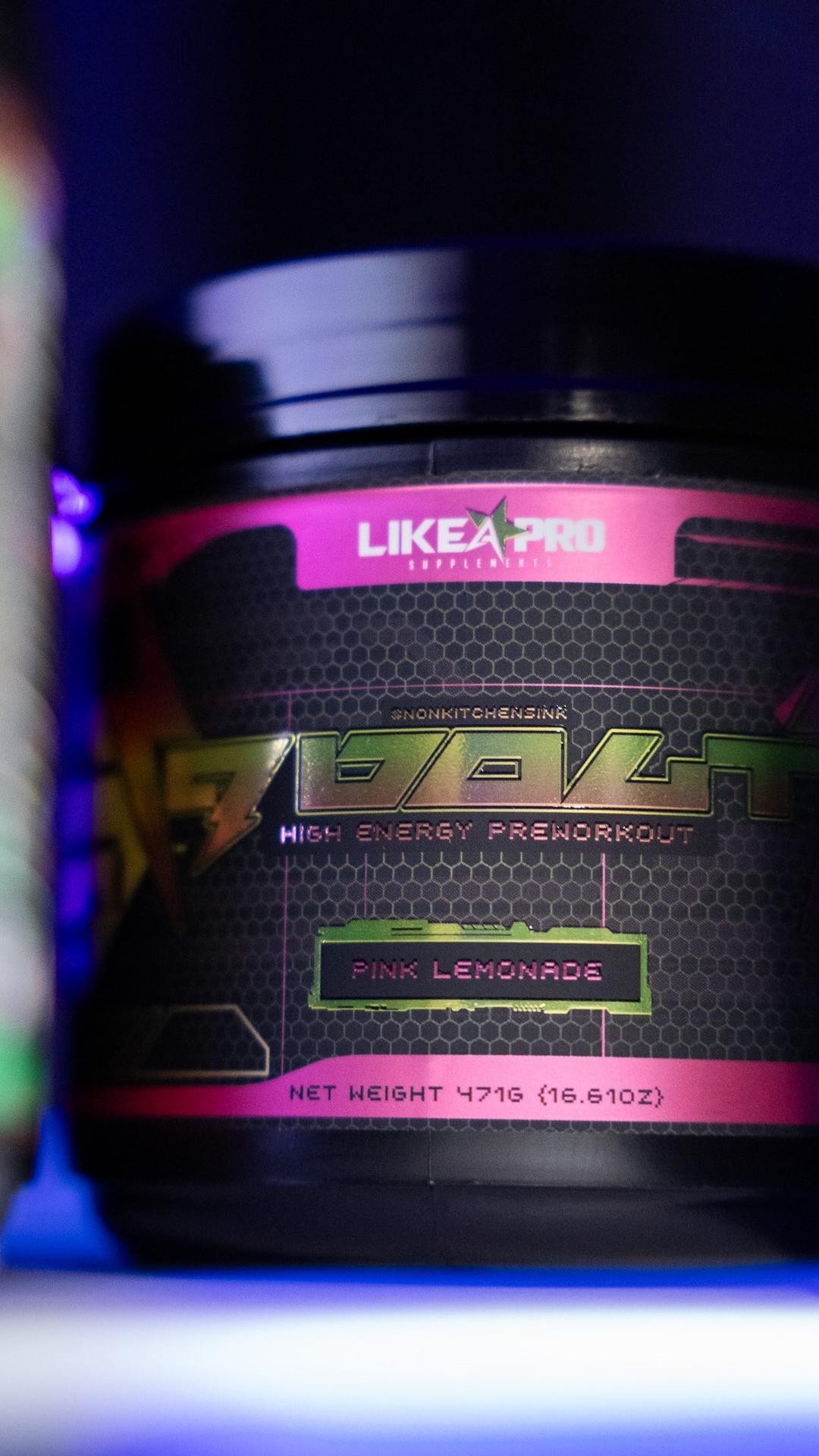
With just nine ingredients, Like a Pro Supplements 9 Volt Pre-Workout brings some zip and some potent pumps, all boosted by zumXR and Peak ATP on top!
If you want to see the pharmacokinetic curves, just scroll up – the first two embedded images in this article are taken from this study.
However, the summary table of results gives us some information that may not be immediately apparent from the graphs. Let's break it down:
- No spikes: the Cmax of zümXR was only about 50% as big as IR caffeine's, which is a good thing. This is an empirical demonstration that zümXR-ER avoids the uncomfortable caffeine spikes that lead to jitters and anxiety.
- Long-lasting: the total duration of active drug effect, Tmax, was 300% longer for zümXR-ER. Again, this is a good thing. It demonstrates that zümXR provides steady-sustained energy.
FDA-Affirmed Generally Recognized As Safe (GRAS) Materials
One of the zümXR system's most attractive characteristics is that the ethylcellulose dispersion and bioadhesive polymer coatings used by PLT have been designated by the FDA as generally recognized as safe (GRAS),[3] a label that comes with great legal force and consumer assurance.
One review of research on ethylcellulose states the following:[4]
There is very limited data detailing possible side effects of EC, hence it is generally regarded as safe (GRAS) and included in the US Food and Drug Administration (FDA) Inactive Ingredients database as well as in the Canadian List of Acceptable Non-medicinal Ingredients to be utilized in oral capsules, suspensions, tablets, topical emulsions, and vaginal or ocular preparations.[4]
Featured Products with zümXR Inside:
-
Pre-Workout Supplements:
-
Body Fortress Elite Laser Start Pre-Workout (exclusively uses zümXRExtended Release)
Ghost Legend ALL OUT is their highest-stim pre-workout, but it's smoothed out thanks to zümXR
There are several options with zümXR inside, but one that's exclusively stimulated by PLT Health's incredible ingredient is from Body Fortress, which comes with great deals on Amazon and is an excellent way for you to test it all alone.
-
Like a Pro 9-Volt
9 Volt provides nine ingredients, many of which are branded and trademarked. Like everything else Like A Pro does, this one's well formulated.
-
Ghost Legend ALL OUT
Legend ALL OUT is the most aggressive of GHOST's pre-workouts, but it's not too aggressive, thanks to zümXR.
-
-
Fat Burners:
- Powdered: Alpha Lion SuperHuman Burn or GAT JetFuel Thermo
- Capsules: Axe & Sledge Fyred
-
Nootropics:
- Powdered: Morphogen Nutrition Cognigen
- Capsules: Natrium Health DynaMax
What Consumers Want in Energy Supplements
Note: This section was added in December 2024 with the release of PLT Health's new zümXR infographic, shown below.
Recent market research reveals fascinating insights into consumer preferences and behaviors around energy supplements. Trust and transparency are paramount - a striking 85% of consumers cite "trust in the brand" as their primary consideration when choosing energy products.[5] This aligns closely with another key finding that 44% of consumers specifically seek products with transparent ingredient labeling. It also explains the importance of influencer marketing.
Perhaps most notably, 90% of surveyed consumers expressed a clear preference for energy products that provide sustained, controlled release of caffeine rather than an immediate surge followed by a crash. This overwhelming consumer demand explains why supplement manufacturers are racing to develop more sophisticated caffeine delivery systems.
What exactly are consumers looking for in their energy supplements? The research highlights several key priorities:
-
Clean Label Appeal
With growing health consciousness, consumers want natural, clean ingredients they can trust.
The emphasis on clean label appeal reflects a broader shift in consumer consciousness about supplement quality and sourcing. Modern supplement users are increasingly educated about ingredients and manufacturing processes, demanding full transparency about what goes into their products. This explains why many are specifically seeking naturally-sourced caffeine options, which zümXR provides through its green coffee bean variant.[5]
-
Multi-Phase Energy
The vast majority prefer energy products that provide sustained, controlled release rather than sharp peaks and crashes.
The overwhelming preference for multi-phase energy solutions stems from real-world experience with traditional caffeine products. Research has shown that caffeine's ergogenic effects are most pronounced when blood concentrations are maintained within a specific range, rather than experiencing dramatic peaks and valleys.[1] This scientific reality aligns perfectly with consumer desires - they're not just seeking a different experience for preference's sake, but rather an objectively more effective approach to caffeine supplementation.
-
Scientifically Validated
Consumers increasingly demand products backed by clinical research and quality testing.
The demand for scientific validation is particularly relevant in the sports nutrition space, where performance margins are razor-thin and consistency is paramount. Athletes and active individuals need to know exactly what to expect from their supplements, especially during competition or intensive training. This explains why 44% of consumers specifically seek transparent ingredient labeling, as it allows them to make informed decisions about their supplementation strategy.[5] Controlled-release technologies like zümXR provide this predictability by ensuring consistent blood levels throughout the supplementation window.
-
Predictable Experience
Users want consistent, reliable effects they can count on every time.
The desire for a predictable experience extends beyond just knowing when caffeine will kick in - it's about maintaining optimal cognitive performance throughout the day. Research has demonstrated that caffeine can enhance various aspects of cognitive function, including attention, vigilance, and reaction time.[6] However, these benefits are most pronounced when caffeine levels are steadily maintained, rather than fluctuating wildly. This aligns with consumer preferences for sustained release formulations that can provide consistent mental alertness without the anxiety or jitters often associated with traditional caffeine products.
Perhaps most telling is that consumers are willing to switch brands to get these benefits - market research indicates that more than half would change their pre-workout brand to access multi-phase energy technology.[5] This represents a significant shift in how consumers view caffeine supplementation, moving away from the "more is better" mentality toward a more sophisticated understanding of controlled release and targeted delivery systems.
This consumer insight helps explain why targeted-release caffeine technologies like zümXR are gaining such rapid market acceptance. By directly addressing these core consumer needs - particularly the desire for sustained, crash-free energy - zümXR represents a significant advancement in caffeine delivery technology.
See PLT Health's December 2024 zümXR full infographic for more information.[5]
Conclusion: A Smoother Way to Caffeine
The zümXR Targeted Release Caffeine system represents some really impressive biotechnological innovation. Ironically, one of the most compelling entries in the race to caffeine 2.0 turns out to be caffeine itself, thanks to PLT's partner Nano Pharmaceuticals basically reinventing the wheel.
The ability to precisely customize the energy curve by varying the admixture of IR, ER, and DR caffeine represents a huge potential leap forward in supplement design. Imagine a future where customers submit genetic data to formulators, who then formulate a custom caffeine blend tailored to that specific individual's neurochemistry and liver enzymes.
We definitely want to see greater use of the delayed release version -- it's quite an experience to have that second wave of caffeine hit.
Thanks to PLT and Nano Pharmaceuticals, we are one step closer to a world where everybody, in one way or another, can reap the considerable benefits of appropriate caffeine supplementation. You can sign up for our PLT Health and zümXR news alerts below, and then see all of our other articles discussing zümXR:
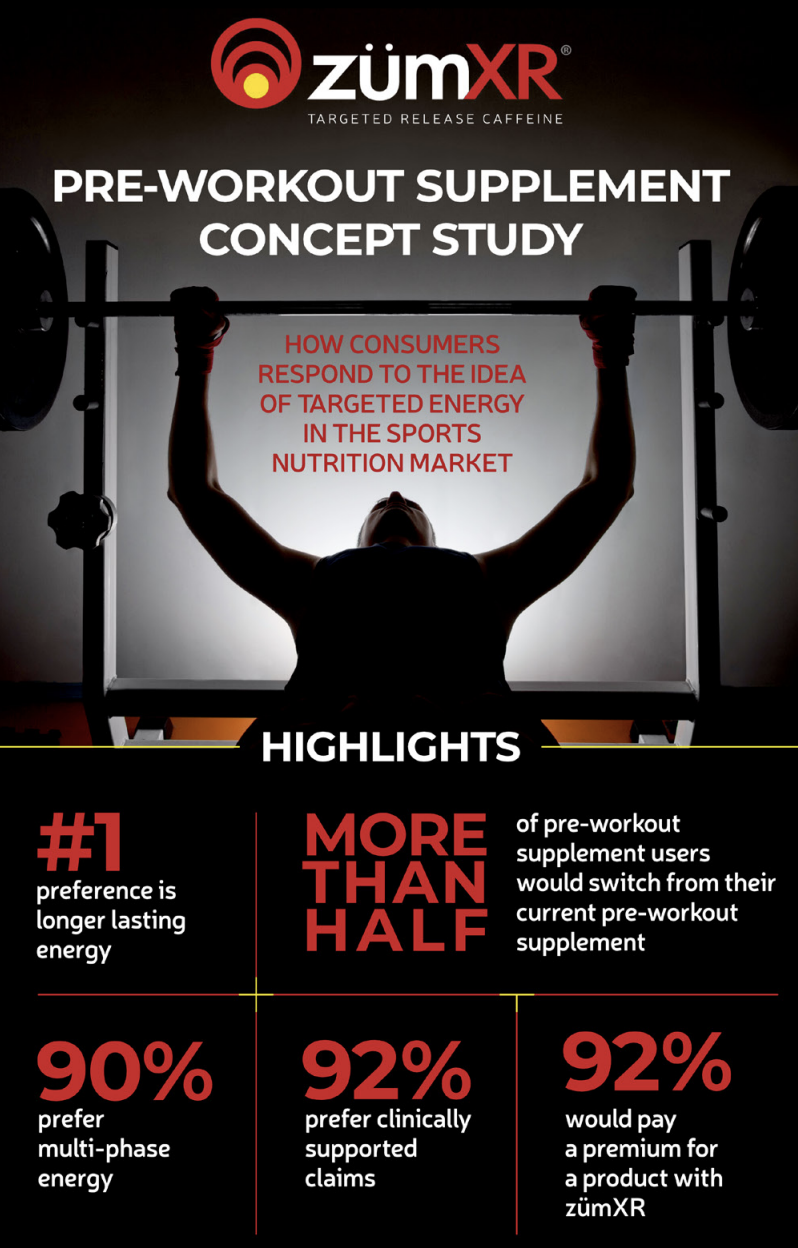
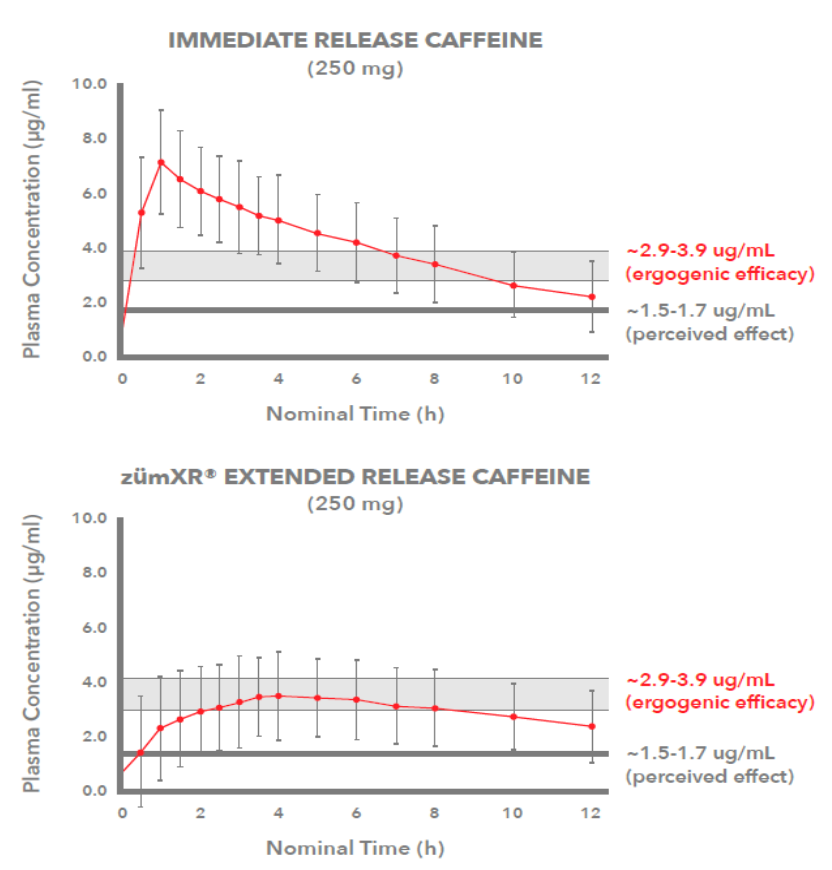
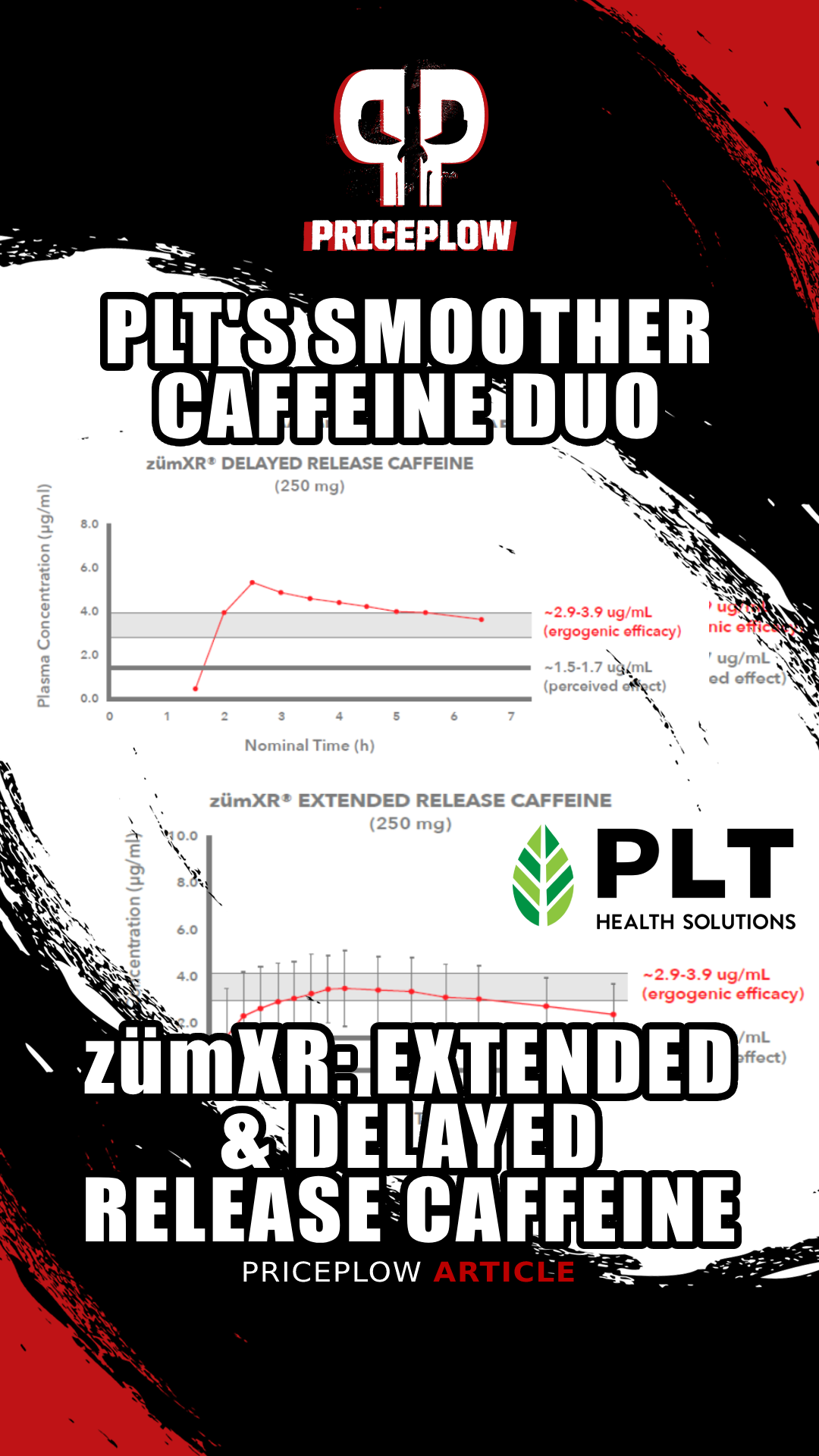
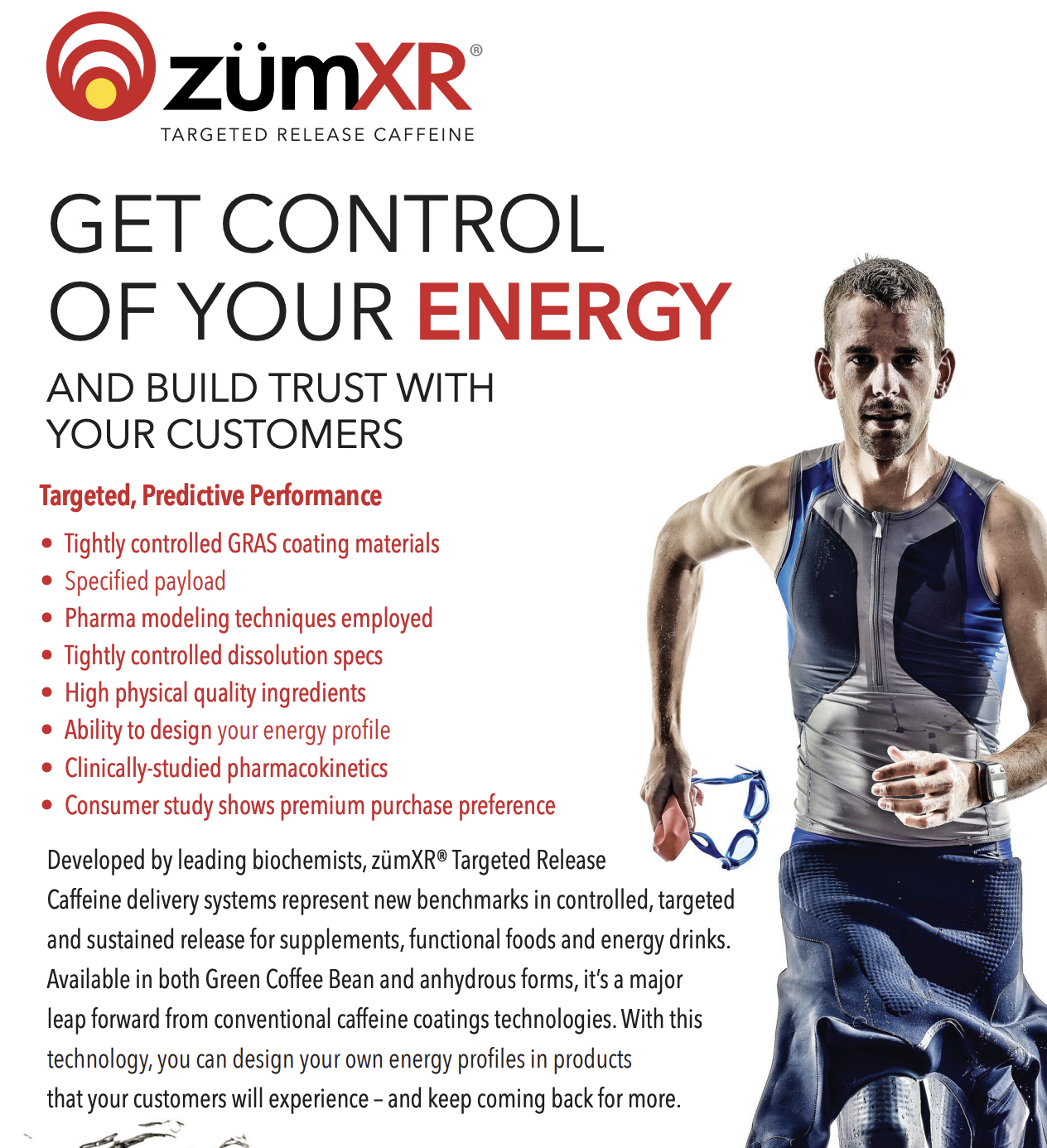

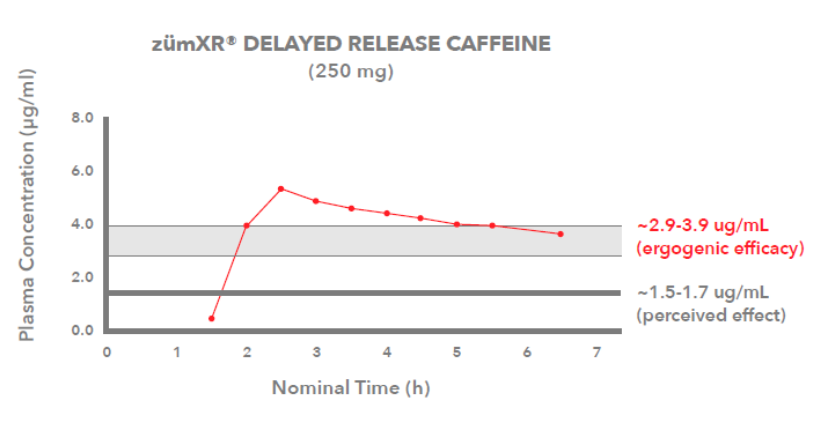

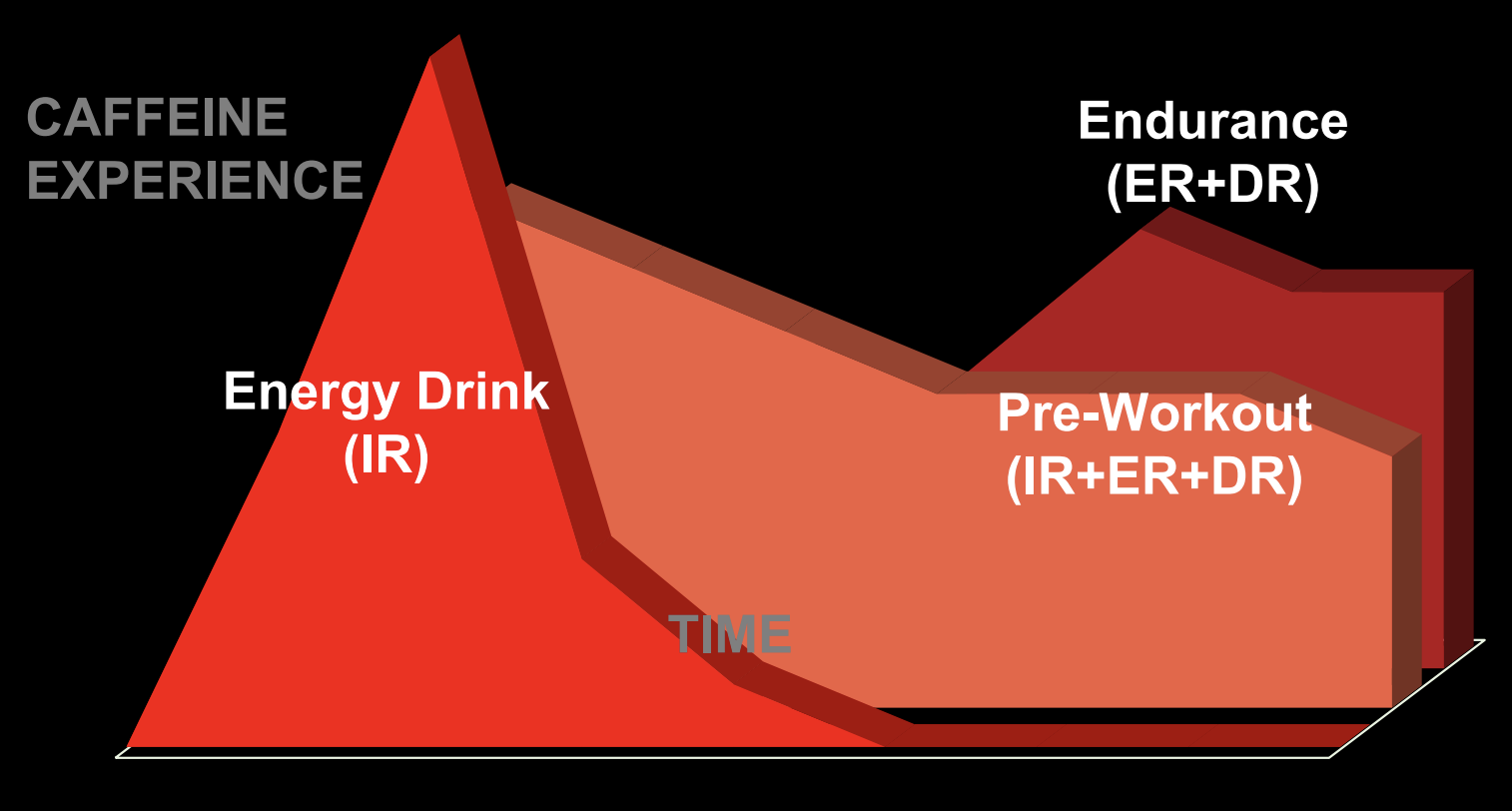
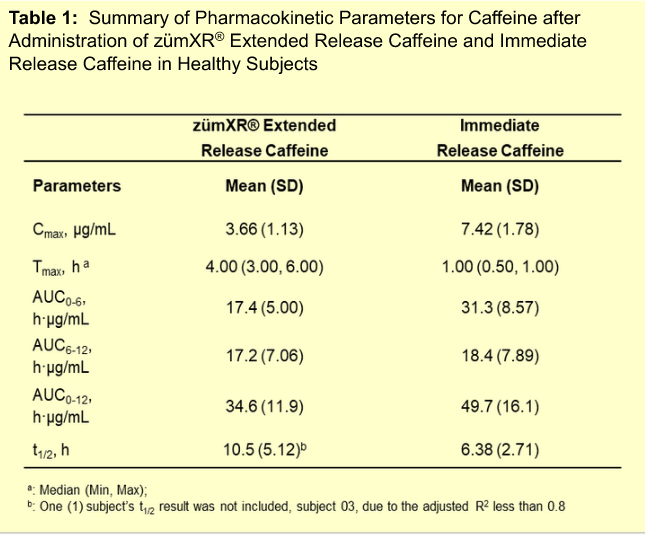
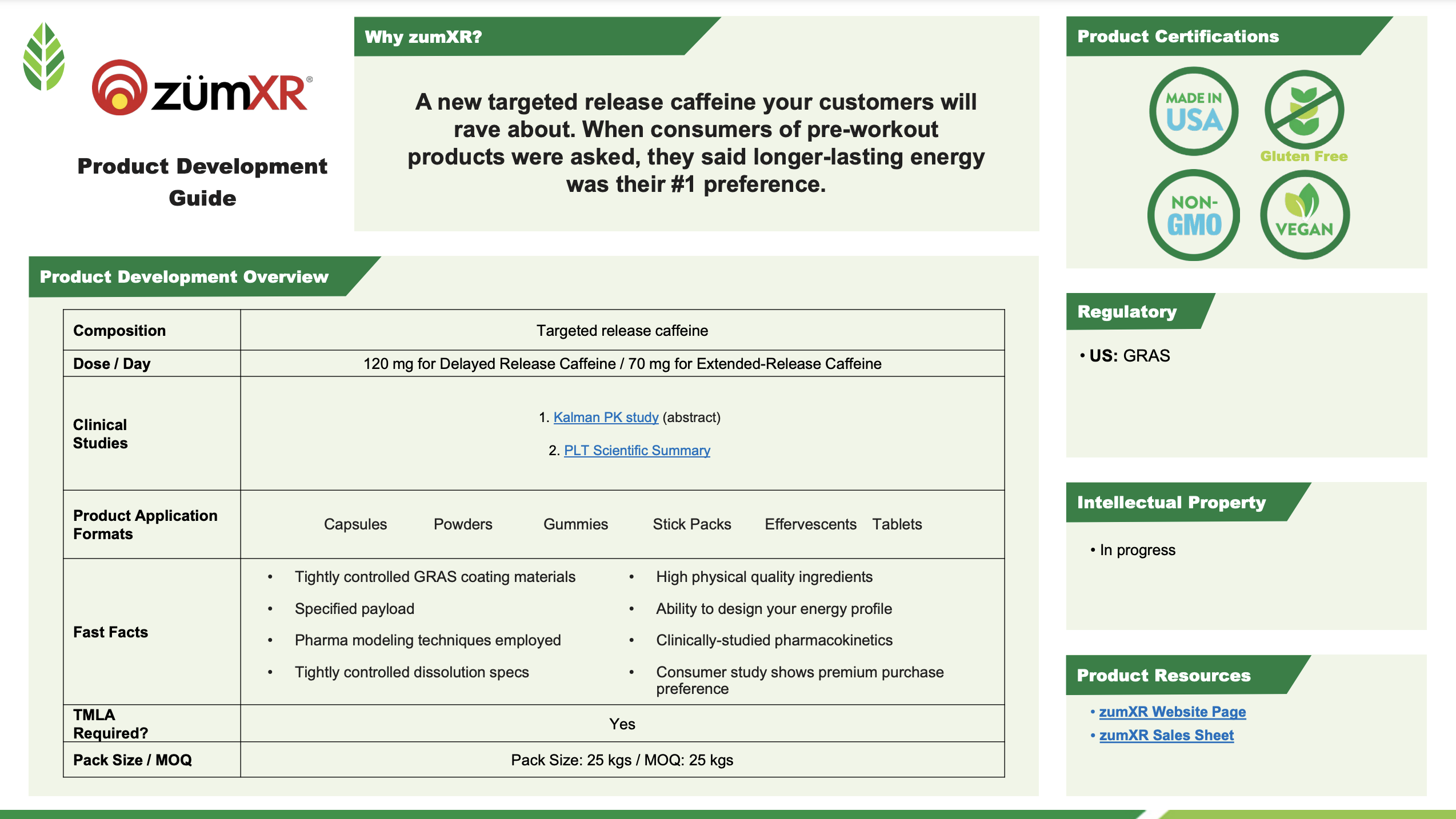




Comments and Discussion (Powered by the PricePlow Forum)